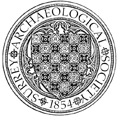Land at The Ridgewood Centre, Old Bisley Road, Frimley
Second phase of evaluation, by H Nicholls and J Cook of ASE following an initial evaluation in 2015 (SyAC 100, 287). No archaeological finds or features were revealed as a sequence of contaminated modern made-ground deposits, directly overlying truncated natural geology, was present across this area of the site.


